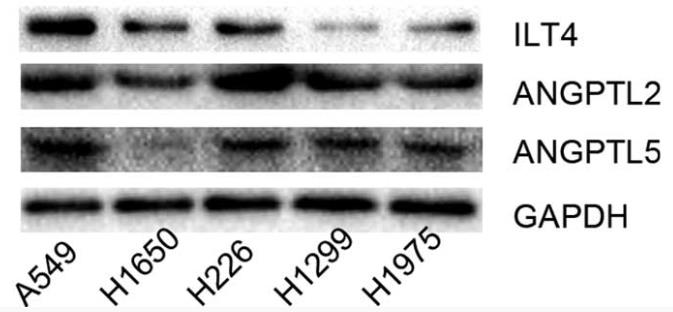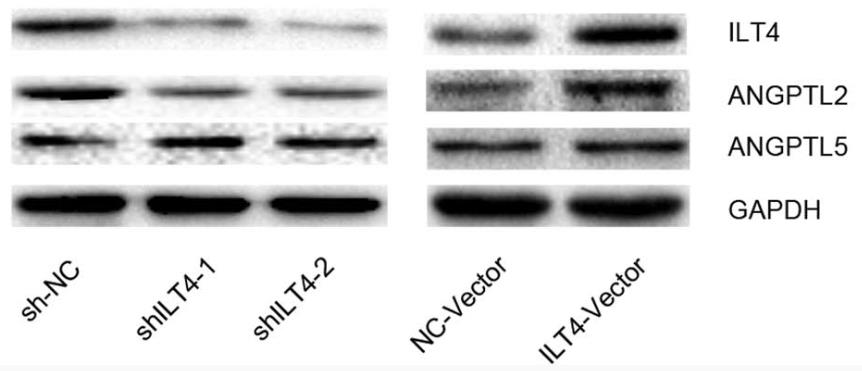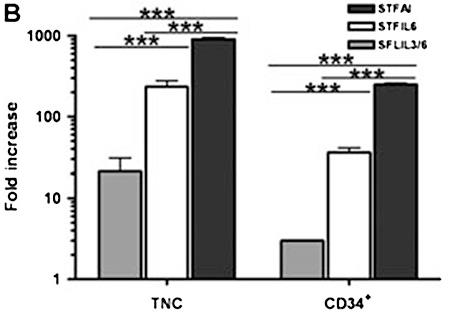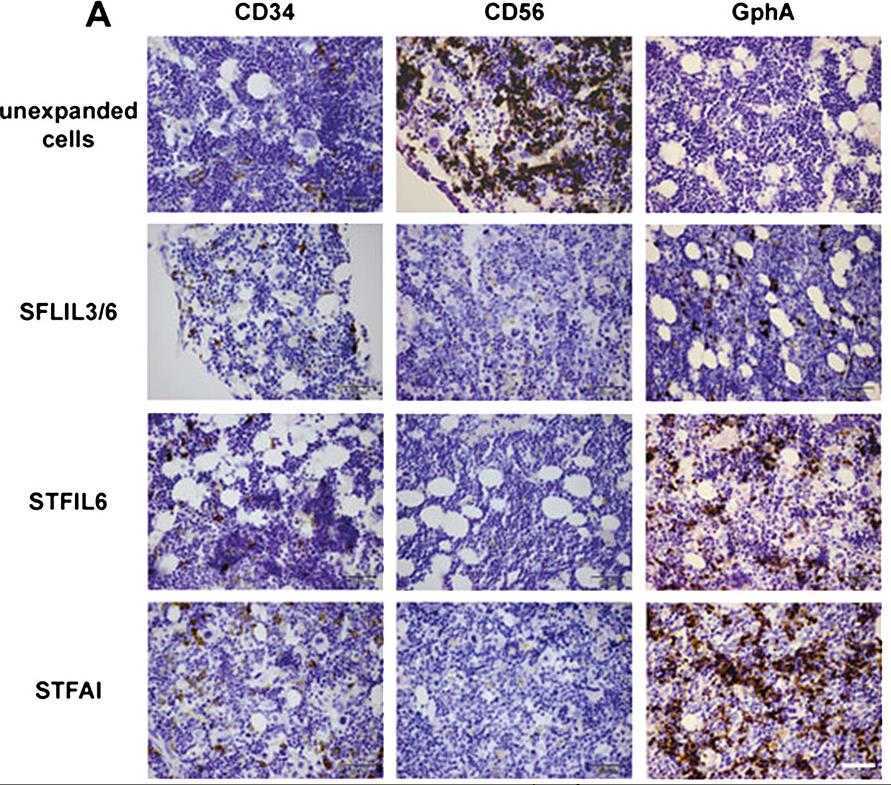Recombinant Human ANGPTL5 protein(Asn26-Lys388), GST-tagged
| Cat.No. : | ANGPTL5-422H |
| Product Overview : | Recombinant Human ANGPTL5 (NP_835228.2) (Asn 26-Lys 388) was expressed in Insect Cells, fused with the GST tag at the N-terminus. |
| Availability | March 31, 2025 |
| Unit | |
| Price | |
| Qty |
- Specification
- Gene Information
- Related Products
- Case Study
- Application
- Download
| Species : | Human |
| Source : | Insect Cells |
| Tag : | GST |
| Protein Length : | 26-388 a.a. |
| Form : | Lyophilized from sterile 50mM Tris, 100mM NaCl, pH 8, 0.5mM GSH, 0.5mM PMSF, 0.5mM EDTA. Normally 5 % - 8 % trehalose, mannitol and 0.01% Tween80 are added as protectants before lyophilization. |
| Molecular Mass : | The recombinant human ANGPTL5/GST chimera consists of 588 amino acids and predicts a molecular mass of 68 kDa as estimated in SDS-PAGE under reducing conditions. |
| Endotoxin : | < 1.0 EU per μg of the protein as determined by the LAL method |
| Purity : | > 90 % as determined by SDS-PAGE |
| Storage : | Samples are stable for up to twelve months from date of receipt at -20°C to -80°C. Store it under sterile conditions at -20°C to -80°C. It is recommended that the protein be aliquoted for optimal storage. Avoid repeated freeze-thaw cycles. |
| Reconstitution : | It is recommended that sterile water be added to the vial to prepare a stock solution of 0.2 ug/ul. Centrifuge the vial at 4°C before opening to recover the entire contents. |
| Gene Name | ANGPTL5 angiopoietin-like 5 [ Homo sapiens ] |
| Official Symbol | ANGPTL5 |
| Synonyms | ANGPTL5; angiopoietin-like 5; angiopoietin-related protein 5; angiopoietin-like protein 5; |
| Gene ID | 253935 |
| mRNA Refseq | NM_178127 |
| Protein Refseq | NP_835228 |
| MIM | 607666 |
| UniProt ID | Q86XS5 |
| ◆ Recombinant Proteins | ||
| ANGPTL5-170H | Recombinant Human ANGPTL5 protein, His-Avi-tagged | +Inquiry |
| ANGPTL5-422H | Recombinant Human ANGPTL5 protein(Asn26-Lys388), GST-tagged | +Inquiry |
| ANGPTL5-333H | Active Recombinant Human ANGPTL5, His-tagged | +Inquiry |
| ANGPTL5-9653H | Recombinant Human ANGPTL5, His-tagged | +Inquiry |
| ANGPTL5-406H | Recombinant Human ANGPTL5, Coiled-Coil Domain, FLAG-tagged | +Inquiry |
| ◆ Cell & Tissue Lysates | ||
| ANGPTL5-704HCL | Recombinant Human ANGPTL5 cell lysate | +Inquiry |
Case 1: Wang L, et al. Mol Med Rep. 2015
Stopping non-small cell lung cancer (NSCLC) from getting worse is tough because we don't really understand it yet. This study found two important players: a protein called ILT4 and its buddy ANGPTLs. Notably, ILT4 shows up with either ANGPTL2 or ANGPTL5 in five NSCLC cell lines at both mRNA and protein levels. Changing ILT4 levels affects ANGPTL2, but not ANGPTL5. Looking at tissue samples from 114 patients, ILT4, ANGPTL2, and ANGPTL5 were high in about 59%, 46%, and 55% of cases. High ILT4 and ANGPTL2 levels are linked to more lymph node metastasis and shorter survival times, while high ANGPTL5 alone also suggests worse survival. But if ILT4 isn't present, ANGPTL2 or ANGPTL5 levels don't significantly impact survival.

Fig1. western blot analysis of NSCLC cell lines after co-expression of ILT4 and ANGPTL2/ANGPTL5.

Fig2. Effect of ILT4 expression on the regulation of ANGPTL2/ANGPTL5 in NSCLC cell line H1650.
Case 2: Ventura Ferreira MS, et al. J Tissue Eng Regen Med. 2013
Cord blood stem cells (CB-HSCs) are promising for treating blood disorders, but there's not always enough of them, especially for adults. This study looked at how well three different mixes of growth factors made these cells multiply. The mixes tested were: (a) SCF, FL, IL-3, IL-6; (b) SCF, TPO, FGF-1, IL-6; and © SCF, TPO, FGF-1, IGFBP2, Angptl-5. The last mix, labeled STFAI, was best at getting the cells to grow and keep their important traits. These cells could also move well outside the body and even take root in NSG mice. While all mixes showed similar overall engraftment results, the STFAI mix stood out by improving total cell expansion, though it might affect how quickly lymphoid cells come back.

Fig1. Effect of STFAI, STFIL6 or SFLIL3/6 conditions on fold increases of CD34+ progenitors was determined.

Fig2. Anti-human CD34, CD56 and glycophorin A (GhpA) stainings of BM slides of NSG recipients transplanted with human CB-derived CD34+cells cultured for 7 days using different cytokine combinations.
Human ANGPTL5 Protein, part of the angiopoietin-like family, is involved in key metabolic activities like lipid management, obesity, and type 2 diabetes. In scientific research, recombinant versions of this protein are crucial for examining their effects within these pathways. Researchers use it in ELISA tests to quantify its presence in samples, helping to link it with obesity, insulin resistance, and inflammation. It also appears in studies exploring its relationship with cardiovascular risk factors such as HsCRP and Ox-LDL, underlining its diagnostic and prognostic potential in metabolic conditions.
In the realms of industrial production and therapy innovation, recombinant Human ANGPTL5 Protein shows great potential. There's active research into targeting it for treating metabolic diseases, focusing particularly on its influence over glucose-related disorders rather than lipid issues. This indicates ANGPTL5 could be a marker for metabolic syndrome, directing new treatment plans and interventions to enhance metabolic well-being.
Not For Human Consumption!
Inquiry
- Reviews
- Q&As
Ask a Question for All ANGPTL5 Products
Required fields are marked with *
My Review for All ANGPTL5 Products
Required fields are marked with *
Inquiry Basket


